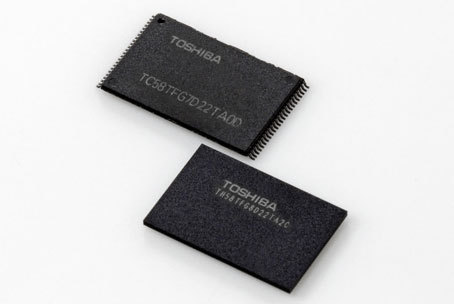Toshiba Develops World’s First 48-layer BiCS (3D Stacked Structure Flash Memory)
Toshiba Develops World’s First 48-layer BiCS (Three Dimensional Stacked Structure Flash Memory)
TOKYO- Toshiba Corporation (TOKYO: 6502) today announced development of the worlds first 48-layer*1 three dimensional stacked cell structure flash memory*2 called BiCS, a 2-bit-per-cell 128-gigabit (16 gigabytes) device. Sample shipments of products using the new process technology start today.
The BiCS is based on a leading-edge 48-layer stacking process, which enhances the reliability of write /erase endurance and boosts write speed, and is suited for use in diverse applications, primarily solid state drives (SSD).
Since making the worlds first announcement of technology for 3D Flash memory*3, Toshiba has continued development towards optimizing mass production. To meet further market growth in 2016 and beyond, Toshiba is proactively promoting the migration to 3D Flash memory by rolling out a product portfolio that emphasizes large capacity applications, such as SSD.
The company is also readying for mass production in the new Fab2 at Yokkaichi Operations, its production site for NAND flash memories. Fab2 is now under construction and will be completed in the first half of 2016, to meet growing demand for flash memory.
-
[1] As of March 26, 2015. Toshiba survey.
-
[2] A structure stacking flash memory cells vertically direction from a silicon plane realizing significant density improvement over conventional NAND that flash memory, where cells are arrayed in a planar direction on a silicon plane.
-
[3] Toshiba presentation, June 12th, 2007.

